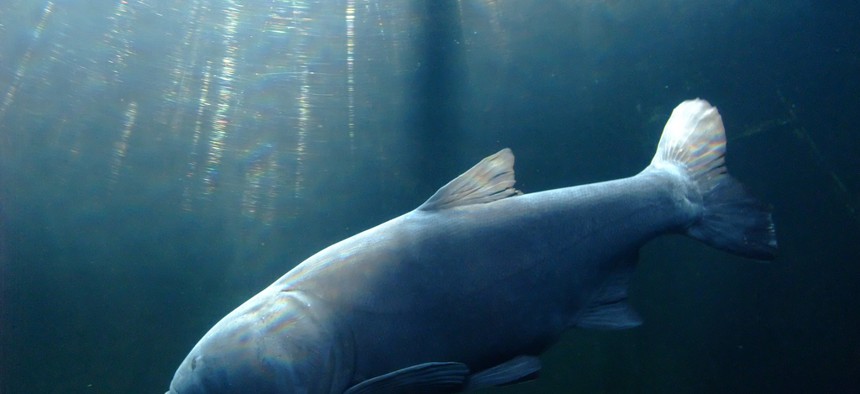Why the Government Is Looking for Water Guns This Summer

The bighead carp is among the invasive species the government is fighting. Flickr user esellers
Hint: It’s about invasive Asian carp, not a water fight.
It’s no secret that silver carp jump in response to boat motors, so it was pretty natural -- for a few federal scientists, anyway -- to wonder how the highly invasive fish would handle powerful pulses from water guns initially used for seismic surveys.
Researchers have been on the case for several years now, and it’s looking like water guns may enable them to control the movements of silver carp and bighead carp -- another invasive Asian species that receives little love in the Midwest, where it has overwhelmed the Mississippi River and other waterways.
This is why the U.S. Geological Survey needs six new water guns, ranging in size from 80 to 200 cubic inches and weighing hundreds of pounds. Water guns like these -- which will run on compressed air, nitrogen or hydraulic fluids -- were originally used for seismic mapping and surveys.
“Initially when seismic surveys were being conducted, people were using things like dynamite to provide that underwater explosion and shock to make a sound pressure wave and penetrate the Earth’s crust,” explained USGS research scientist Mark Gaikowski, who is leading the water gun Asian carp control efforts from La Crosse, Wisconsin.
But it’s hard to replicate dynamite explosions with any consistency, and polluting waterways with TNT isn’t ideal, so surveyors started using the water guns. Now, seismologists use air guns that operate similarly, leaving the water guns to scientists like Gaikowski, who described the “large sound signature and underwater pressure wave” they make.
Indeed, the carp have avoided the areas where the guns operate in pond experiments, Gaikowski said. If scientists can control where the invasive carp swim in nature, they can divert the fish from prime spawning habitats to reduce the population.
“Silver carp and bighead carp use the water currents to keep their eggs afloat -- that way embryos develop in the eggs as they’re floating down river,” Gaikowski said. The idea is to disrupt this process from the get-go.
Silver carp and bighead carp were initially imported from Asia to help keep fish farms in the South clean because they eat plankton and algae. They were released into the Mississippi in the 1970s and swim up river, where they eat too much, depriving native species. Young bighead and silver carp can eat more than their body weight each day, and mature Asian carp weigh more than 30 pounds on average and up to 100 pounds.
Gaikowski’s project is called “Use of Seismic Technology to Divert and Eradicate Asian Carp,” and his team is working on a research paper to describe the carp’s response to large water gun pulses, with publication details yet to be determined.
(Image via Flickr user esellers)



